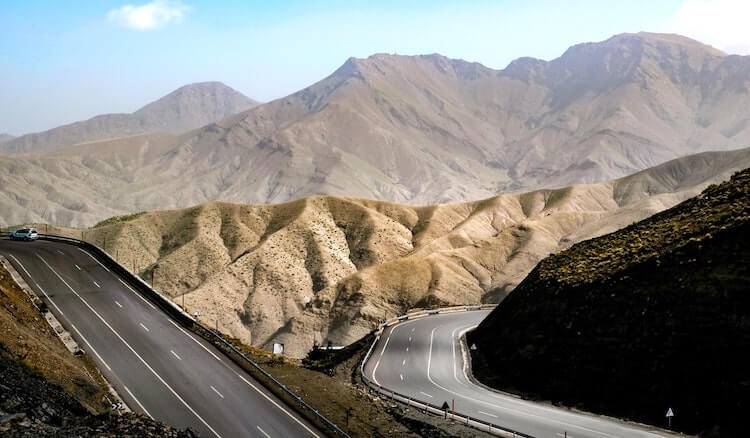
Atlas mountains, Morocco, Africa
Stretching some 2,500km (1,600 miles) across Morocco, Algeria, and Tunisia, the mighty Atlas Mountains are a series of mountain ranges created by the violent collision of the African and Eurasian tectonic plates roughly 80 million years ago. The massif forms a barrier between the Mediterranean Sea and the Sahara. Fortunately, the most important part of the Atlas Mountains is located in Morocco as it is enriched by three massifs: the Anti Atlas, the Middle Atlas, and the High Atlas that attracts most of the visitors. Many come to climb Djebel Toubkal, the highest peak of the Atlas Mountains, which rises to 4,167 meters.
Shared between the three Maghreb countries, the Atlas Mountains are among the must-see places in North-Africa. No matter what country you are going to, be sure to visit it. Magnificent landscapes, canyons, oases, and rivers await you.
Suffice to say, the Atlas Mountains are one of the world’s most fascinating regions to travel through. Most people come here to trek, discover Berber villages, take beautiful hike, and walk from one remote village to another. If this is what you intend to do, and you are in process of planning the perfect Morocco trip, then let this complete guide share everything you need to know in preparation for a journey to this stunning region.
This massif takes its name from a deity from Berber and Greek mythology. According to the Greek myth, the giant Atlas is condemned by Zeus to support the celestial vault on his shoulders. Petrified by Perseus thanks to the head of Medusa, the giant is transformed into a mountain range. Herodotus reports in a work on the Berbers that the locals consider the mountain as the column that supports the sky. The word Atlas thus seems to come from the Berber word assalas meaning “beam”.
At the heart of the myths and legends of the Mediterranean, the Atlas Mountains are to be discovered both for the diversity of cultures and landscapes they shelter and for the experiences and sporting activities that can be practiced there. Swarmed with fertile plateaus, old desert and eroded mountains, canyons, and freshwater basins, The Atlas Mountains has everything to amaze visitors. The massif has a number of unique sites to visit. On the Moroccan side, we can thus evoke the Ait Bouguemaz valley, the national parks of Ifrane, Khenifra, and Tazekka, but also the national park of Toubkal in the High Atlas and the Paradise Valley not far from Agadir.
The Berber Morocco tour will set you off on a once-in-a-lifetime journey to explore the Atlas Mountains, discover the real Morocco and its rich cultural heritage and delve into the alleyways of spice-scented souks on a luxury tailor made tour that takes you from bustling markets of the imperial cities to the most idyllic Berber Villages and valleys in the High and Middle Atlas mountains.
The hikes and treks in this ancient massif are numerous, very numerous! This activity is probably the best for discovering the Atlas Mountains. In the Moroccan part, there are several hikes, some easy and others more difficult, but all exceptional. Generally, they are rather well marked and indicated. Here are a few:
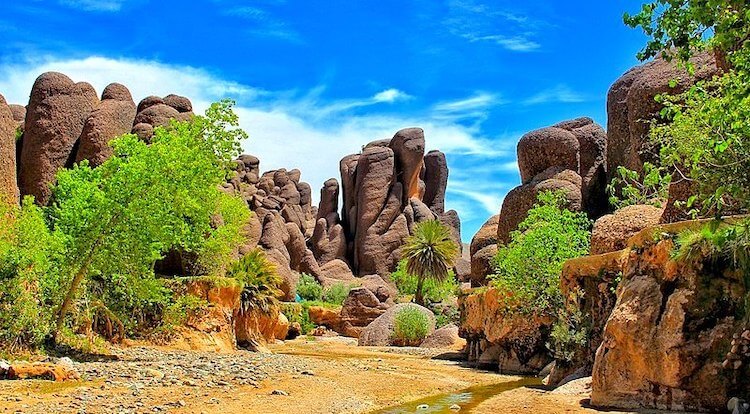
Tislit Gorges, Morocco
Located between Taznakht and Taliouine in the Anti-Atlas that contains some of the world's largest and most diverse mineral resources, most of which are still untouched. This hiking circuit immerses you in a unique site in the world, with its volcanic peaks, its changing colors, and its peaceful river.
Taliouine is famous for its production of saffron and is one of the main exporters of this spice worldwide.
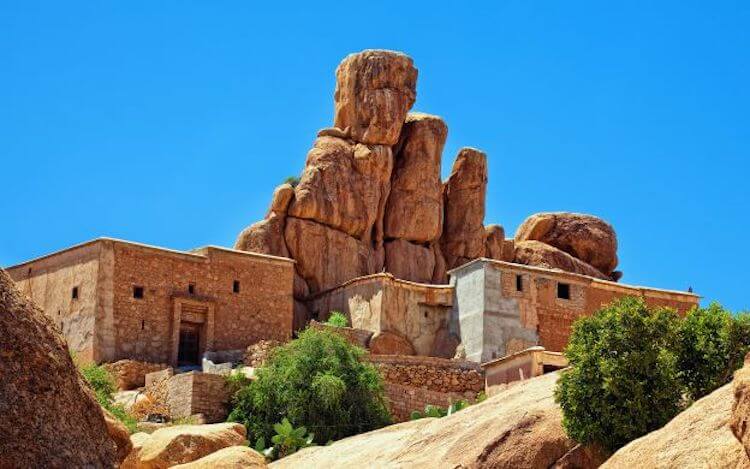
tafraoute, Morocco
Located in the Anti-Atlas Mountain sub-range, Tafraout is famed for blue painted rocks by artist Jean Verame and strange rock formations revealing the powerful force of nature.
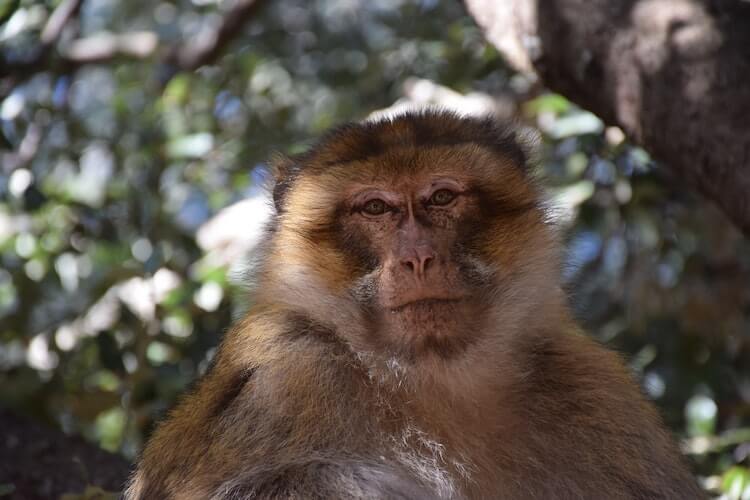
barbary-macaque, Ifran, Morocco
Located in the Middle Atlas mountain range, the oak and cedar-forested Ifrane National Park lies 80k (50 miles) south of Fez, one of Morocco’s must-visit imperial cities. Ifrane National Park is one of the few remaining habitats and home to the world’s largest population of the barbary-macaque, Macaca Sylvanus. Seeing a troop of them is almost guaranteed. In the Cedre Gouraud Forest, there is also an 800-year-old cedar tree.
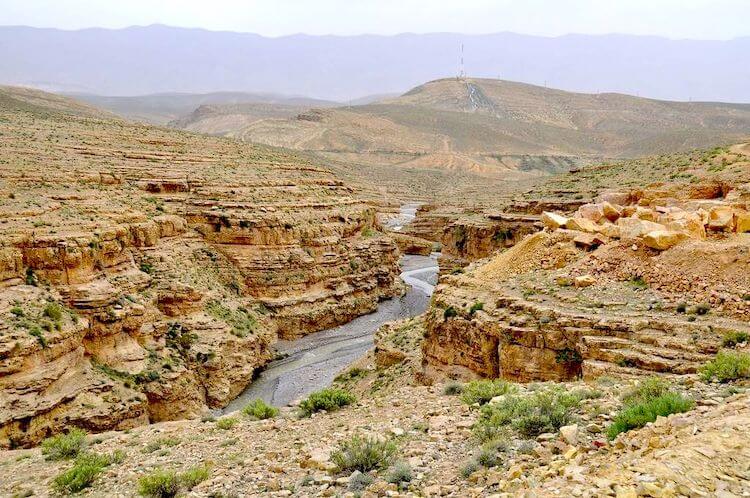
Berrem Gorge, Morocco
Located in the Middle Atlas mountain range, (Gorges des Berrem) is a small but stunning canyon near the market town of Midelt, 199km (124 miles) south of Fez who is also known as the Kasbah des Noyers. In the surrounding areas, there are plantations producing walnuts, plums, apricots, and pomegranates.
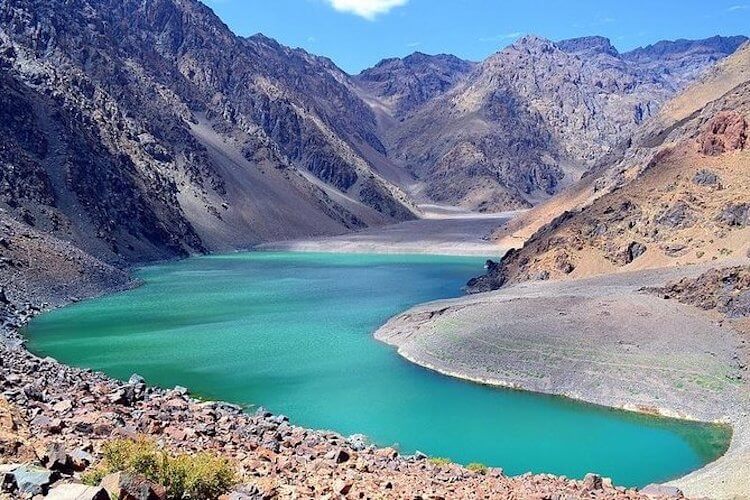
Lake Ifni, Morocco
Located in the heart of the High Atlas, at the bottom of a valley framed by the peaks of Jebel Toubkal, Lake Ifni is the largest mountain lake in Morocco and one of the highest with an altitude of 2,295 m. The ideal place for nature lovers and especially trekking. Accessible from Imlil, it presents spectacular scenery. The hike is of medium difficulty.
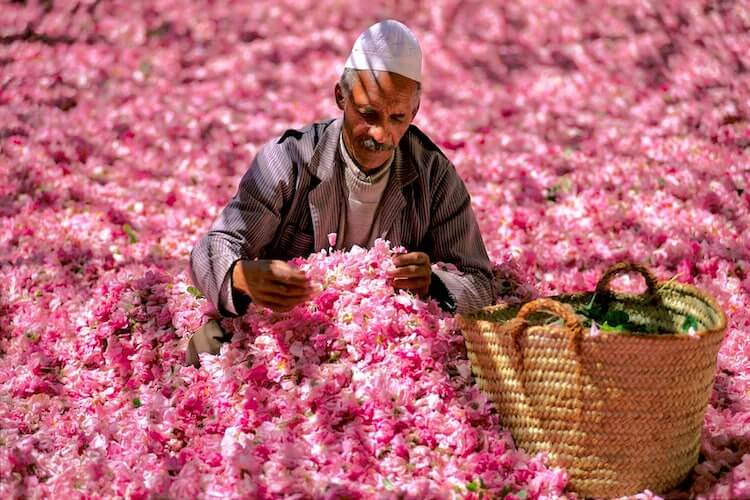
Valley of Roses, Morocco
The Dadès Gorges are a series of rugged wadi gorges carved out by the Dadès River in Morocco. The river originates in the High Atlas range of the Atlas mountains, flowing some 350 kilometers southwest before joining the Draa River at the edge of the Sahara. Easy to medium difficulty, this circuit will take you through a labyrinth of colorful valleys, splendid gorges and pink canyons carved out by the M’gou river.
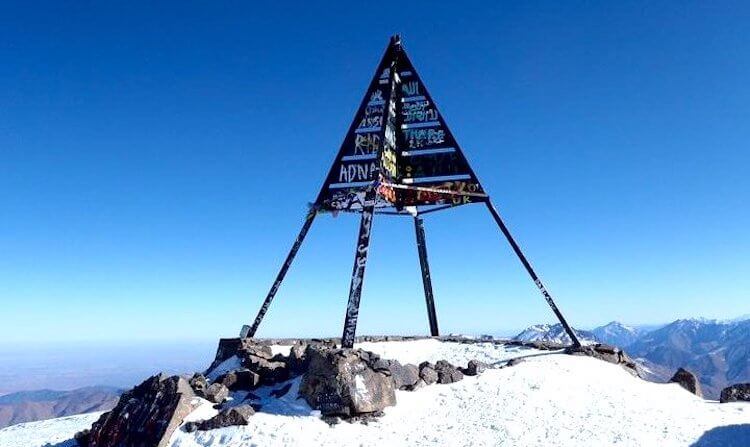
The ascent of Jebel Toubkal, Morocco
Located in the High Atlas, 90km (56 miles) south of Marrakesh is where most visitors start their journey into the High Atlas. Set outside the Toubkal National Park (Parc National du Jbel Toubkal), Imlil is a hub for mountain tourism in Morocco.
Mount Toubkal ascent trek is for athletes and seasoned practitioners! It lasts 2 to 3 days days and starts from the berber village of Imlil. Imlil is the place to meet your guide, hire a mule, or get any last-minute supplies before starting your trek.
Bear in mind that the authority requires each group to be accompanied by a qualified local guide who has plenty of experience and knowledge regarding the High Atlas before attempting the ascent. You must also book accommodation in advance as camping in unauthorized places is prohibited.
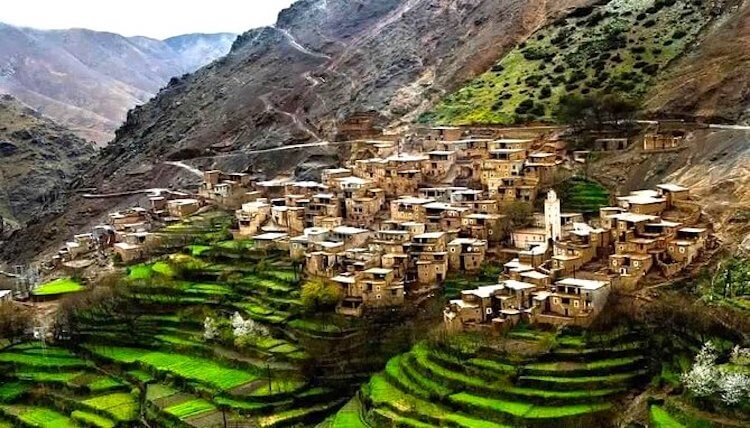
Azzaden-valley, Morocco, Africa
Located in the High Atlas, just south of Imlil, is often touted as the quieter alternative to Imlil and just as a spectacular counterpart. With Autumn setting in, the colors of the Walnut Trees that hug the valley floor are at their most spectacular making for some incredible photography. It is possible to walk from Imlil to Azzaden Valley (about six hours). You can also start the hike to the summit of Jbel Toubkal from this peaceful Berber village.
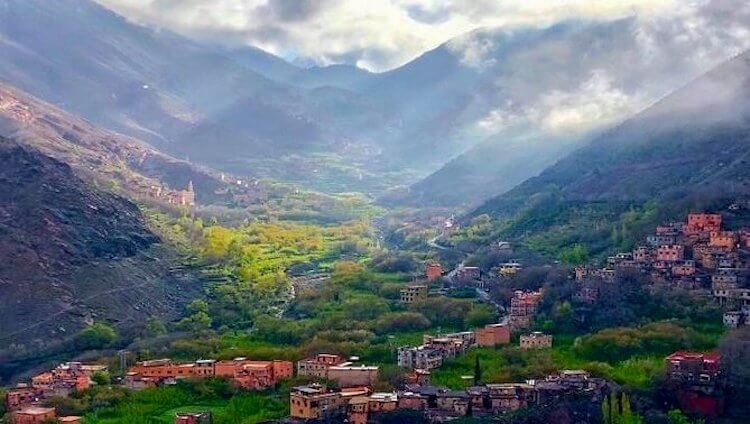
Ourika Valley, Morocco
Located in The High Atlas, 40km (25 miles) southeast of Marrakesh, and due to its many waterfalls and several attractions, Ourika valley is a very popular Ourika day trip from Marrakech. This verdant corner of the High Atlas Mountains is best visited on Monday when the local Souk (Tnine Ourika) takes place and the town comes alive. If you book this day trip with Absolute Morocco, you are likely to visit a women’s argan oil cooperative and have tea or lunch with a Berber family in Setti Fatma.
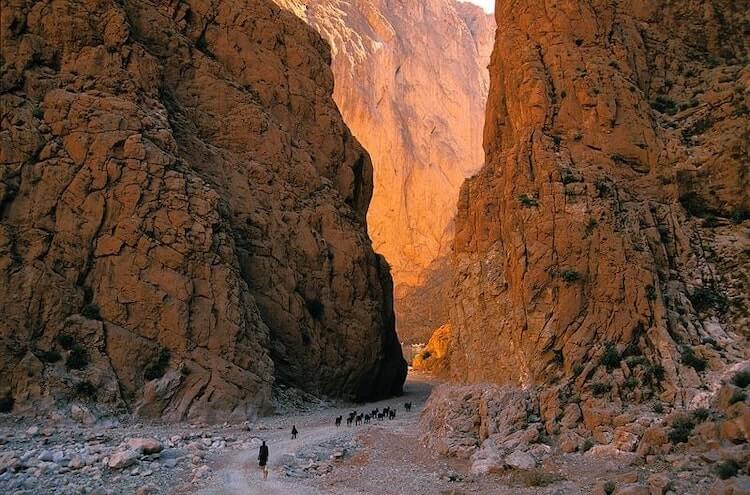
Todra Gorges, Morocco
Located in the eastern part of the High Atlas Mountains, near the town of Tinghir (Tinerhir), 390km (242 miles) east of Marrakesh, Todra Gorges are a series of limestone river canyons, or wadi, breathtakingly beautiful and a magnet for photographers, hikers, and rock climbers.
Both the Todgha and neighboring Dades Rivers are responsible for carving out these deep cliff-sided canyons, on their final 40 kilometers through the mountains.
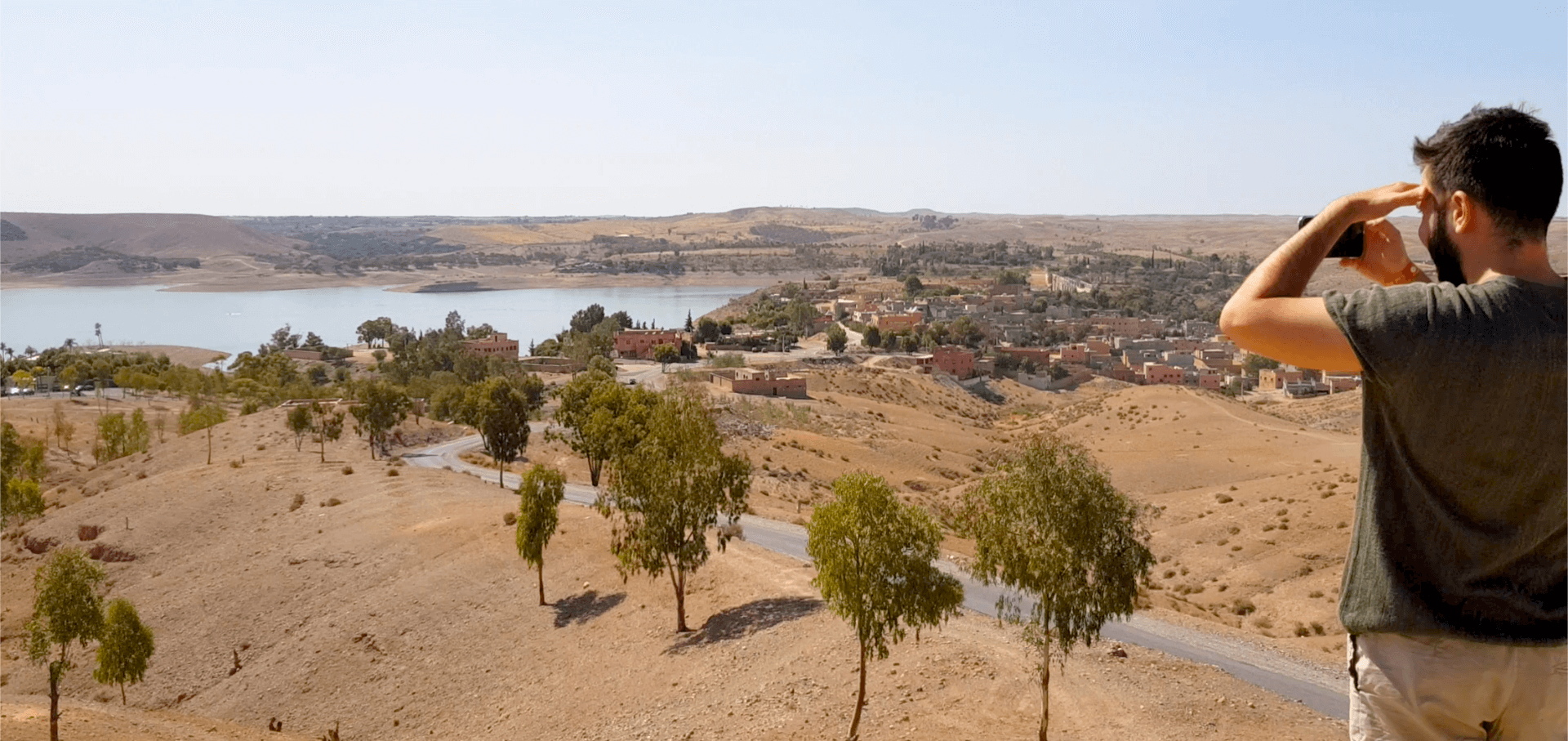
Takerkoust Lake, Morocco ©
To discover the Atlas Mountains, you can obviously opt for guided day tours. Accompanied by a local guide, you can learn more about the region, its peculiarities, and its history. Usually, a one-day guided tour focuses on a unique and special site in the Atlas. Among the most popular excursions, we can, for example, include the Imlil Valley, the Ouzoud Waterfalls, the Paradise Valley, or the village of Tamatert.
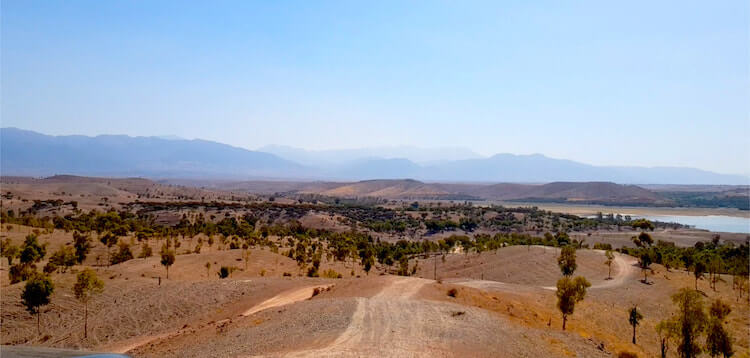
Atlas Mountains, Morocco
You can opt for a day or multi-day trip to the Atlas Mountains. Most of these activities take place in 4×4s, sometimes including a camel ride or a walking tour. These excursions are therefore ideal for combining several experiences and discovering several sites in the Atlas Mountains. Some also include a passage through the Sahara.
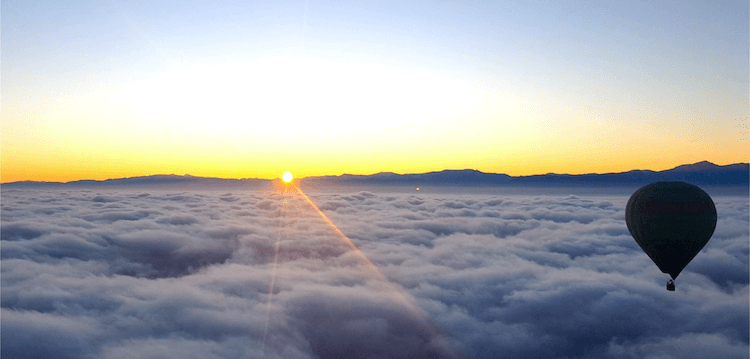
hot air balloon, Marrakech ©
If the Atlas Mountains are best viewed from the ground, admiring them from the skies is sure to be memorable. A hot-air balloon flight, but also by helicopter, offers you a different and spectacular perspective on this natural monument. Fortunately, there are quite a few such tours and the prices aren't as high as you might think at first.
A one-hour hot air balloon flight from Marrakech is appx €200. From the skies, you will observe the Moroccan countryside, as well as the valleys and hills of the desert. Since these flights often take place at dawn, the rising sun will tint the landscapes with beautiful colors of gold, orange, red, and yellow. There is no doubt that this experience will leave you with lasting memories!
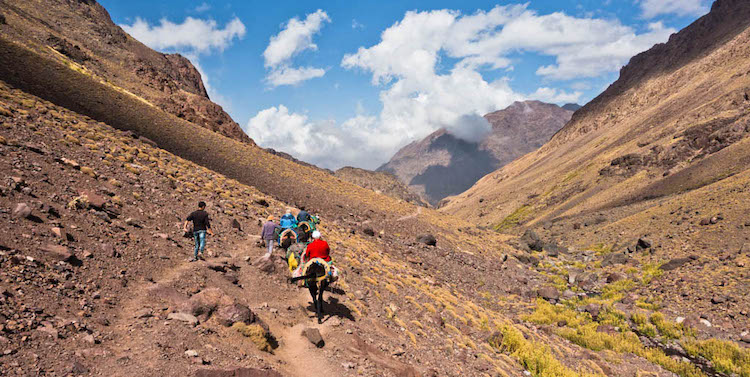
Mule riding in the Atlas mountains
Mules are a part of Berber life and they are vital for transporting supplies up the mountains and to remote communities, and also for carrying the occasional tourist as not all Atlas visitors are accomplished hikers!
Fortunately, it is possible to discover the Atlas Mountains in many different ways and one of the best is obviously an excursion or ride on the back of a mule. These adventures are excellent for gently discovering the landscapes of the Atlas Mountains. Accompanied by a guide, rides start in Imlil village and may head in any direction towards Azzaden, Imnane valleys, peaceful rivers, waterfalls and ponds.
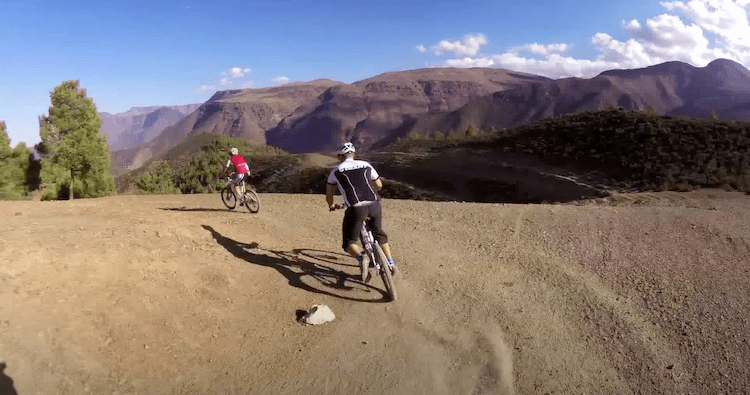
cycling in the High Atlas Mountains
Same as walking tours, biking is a great way to explore the Atlas Mountains. Many mountain bike trails cross the entire Moroccan Atlas. In winter, we will favor the south of Morocco. This region will delight you with its arid mountains, oasis valleys and desert. In summer, the Berber High Atlas is open to cycle hikers. You can then cross high passes, follow the bed of the wadis, travel through hidden green valleys. In short, regardless of the time of year, you will find what you are looking for in the Moroccan Atlas Mountains!
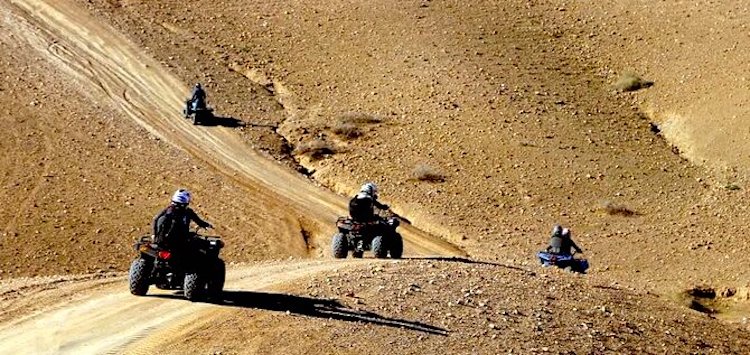
Quad Atlas Mountain expeditions
Do you want to combine thrills and discover fantastic landscapes? Then quad or buggy excursions are made for you! As with the 4×4 outings, many quad or buggy excursions are organized to easily discover the Atlas Mountains. Most of the outings starts from Marrakech and follow the same route. You will then discover the foot of the High Atlas Mountains, with part of the excursion in Agafay desert.
You will travel through the Berber countryside, passing by orchards, meadows, eucalyptus forests and the desert. As a backdrop, the Atlas Mountains will catch your eye. You will be able to admire them at each of your stops. Some guided quad expeditions even offer to drink tea in a typical house, obviously with the snow-capped mountains as companions. In addition to the Berber villages, most excursions make a detour to the magnificent Lake of Takerkoust.
The massif is as you know quite vast. Thus, it is home to many villages and towns and therefore many places to stay. Sleeping in the Atlas Mountains will allow you to multiply the visits, on foot, by bike, or by other means in the mountains. But above all, you will be able to enjoy its unique atmosphere, its landscapes, and its serenity. Far from big cities, closer to the heavens, you can take the time to discover, contemplate, and let yourself go.
In Morocco, there are several places that we can recommend to you. From these accommodations, you can easily explore several exceptional sites in the Atlas Mountains. Here is our selection:
Nestled in the Ourika Valley, the Kasbah Bab Ourika is an ecological and authentic hotel. Open year-round, it offers all the services and facilities for exploring the surrounding Atlas Mountains. This establishment is ideal for an adventurous stay in style.
Located in the Ouirgane Valley, Amandier is a luxurious hotel just 45 minutes from Marrakech. As for the Kasbah Bab Ourika, exceptional views of the mountains await you. The uniqueness of this place lies in its exceptional facilities: an infinity pool, comfortable rooms with beautiful views of the peaks, spa, and restaurant.
Although the area is vast, covering some 2,500km (1,600 miles), the best times to visit the Atlas Mountain is Spring (March to May) and Autumn (September to November) especially if your primary purpose is hiking. Summer is sizzling hot at most of the sights we covered above, while winter can be rainy, or snowy, depending on where you go, however, this can be a great opportunity to skiing in Toubkal National Park and Oukaïmeden from January to March. Note that during peak periods, prices tend to be higher and tourist sites are likely to be crowded.
Ramadan is the month of fasting, it is a very important period in Morocco, where you will experience distinctive aspects of the culture that are only apparent once a year. Muslims fast from all food and water from dawn until sunset. When it is time to break the fast you will hear the evening call to prayer, which is announced through a loudspeaker, however visitors during that time should at least be aware of it and are likely to experience some effect from it such as monuments and shop opening time changes...